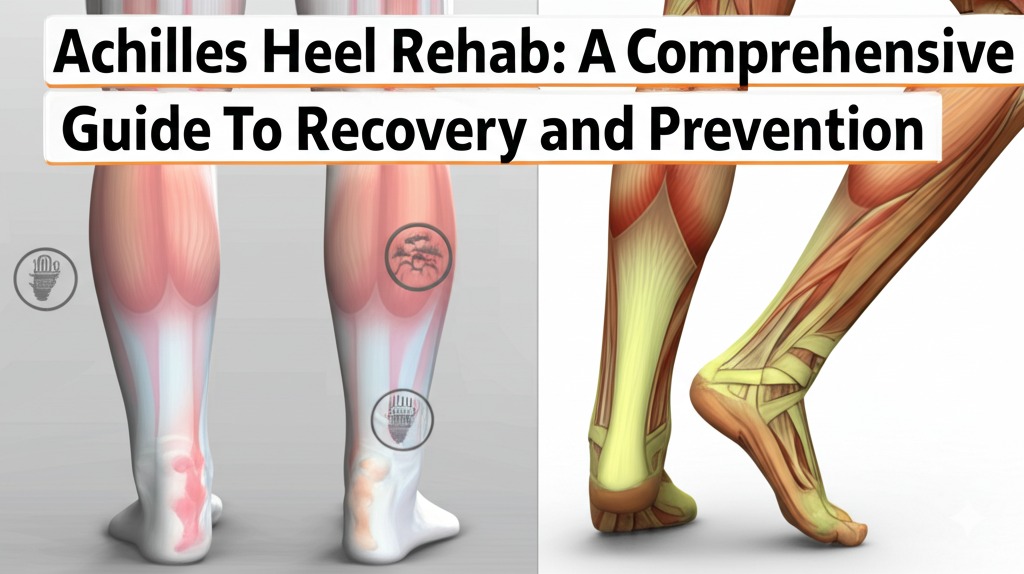Dealing with an Achilles heel injury can be a frustrating experience, especially for athletes or anyone who enjoys an active lifestyle. The Achilles tendon, located at the back of your ankle, plays a crucial role in walking, running, and jumping. If it’s injured, whether through overuse, a sudden impact, or improper technique, rehab becomes essential for a complete recovery. This article will guide you through the best practices for Achilles heel rehab, ensuring you understand the process, exercises, and tips to help you get back on your feet.
Understanding Achilles Tendon Injuries
Before diving into the rehab process, it’s essential to understand what happens when the Achilles tendon is injured. The Achilles tendon is the largest tendon in the body, connecting the calf muscles to the heel bone. Injuries can range from mild strains to more severe ruptures, but all injuries require proper rehabilitation to avoid long-term damage and recurring pain.
Common Causes of Achilles Tendon Injuries
Achilles tendon injuries usually occur due to one of the following factors:
- Overuse: Repetitive stress from activities like running, especially with sudden speed changes.
- Sudden Movements: A quick pivot or jump can put sudden strain on the tendon.
- Improper Footwear: Wearing shoes that don’t provide adequate support can increase the risk of injury.
- Age: As we age, the tendon loses some of its elasticity, making it more prone to injury.
The Stages of Achilles Heel Rehab
Achilles rehab is typically divided into three stages: the acute stage, the recovery stage, and the strengthening stage. Each stage focuses on different aspects of healing.
1. Acute Stage: Rest and Recovery
In the first few days following an injury, the focus should be on reducing pain and swelling.
Key Steps:
- Rest: Avoid any activities that put stress on the tendon.
- Ice Therapy: Apply ice to the area to reduce swelling and inflammation. Do this for 15-20 minutes every few hours.
- Elevation: Keep the injured leg elevated to reduce swelling.
- Compression: Use an elastic bandage to help with swelling, but make sure it’s not too tight.
This stage is critical for preventing further damage to the tendon and allowing the body to initiate the healing process.
2. Recovery Stage: Gentle Stretching and Mobilization
Once the acute pain has subsided, typically after a few days to a week, gentle movement and stretching exercises can be introduced.
Key Steps:
- Gentle Stretching: Start with light stretching exercises to increase flexibility in the Achilles tendon and calf muscles. A simple calf stretch can be done by gently leaning against a wall with one leg behind you and bending the front knee, stretching the calf of the back leg.
- Range-of-Motion Exercises: These exercises help maintain mobility and prevent stiffness around the joint.
At this stage, it’s important to avoid pushing too hard—progress should be gradual to ensure you’re not reinjuring the tendon.
3. Strengthening Stage: Building Tendon Resilience
The final stage of rehab focuses on strengthening the tendon to prevent future injuries. This phase should only begin once pain has significantly decreased, and flexibility has returned.
Key Steps:
- Eccentric Strengthening Exercises: These are exercises where the tendon lengthens under load, helping to rebuild strength and elasticity. A popular exercise for this is the heel drop, where you raise your body on your toes and then slowly lower your heels below the level of a step.
- Calf Raises: Start with basic calf raises and progress to more challenging variations, such as single-leg calf raises.
- Low-Impact Activity: Engage in low-impact activities such as cycling or swimming to maintain cardiovascular health without putting undue stress on the tendon.
Consistency is key in this stage, as strengthening the Achilles tendon can take time.
Tips for Preventing Achilles Tendon Injuries
While rehab can help you recover from an Achilles tendon injury, prevention is always better than a cure. Here are some essential tips to reduce the risk of future injuries:
- Warm-Up and Stretch: Before engaging in any physical activity, make sure to properly warm up and stretch your calves and Achilles tendon.
- Wear Proper Footwear: Choose shoes with adequate support, especially if you engage in high-impact sports.
- Avoid Overuse: Gradually increase the intensity and duration of activities that involve running or jumping to prevent overloading the tendon.
- Cross-Train: Engage in different types of exercises to reduce repetitive strain on the Achilles tendon.
Conclusion: Take Control of Your Recovery
Achilles tendon injuries can be debilitating, but with the right rehabilitation approach, recovery is absolutely achievable. Whether you’re in the acute phase of injury or working on strengthening the tendon, it’s crucial to follow a well-structured rehab plan. Remember, listen to your body and avoid pushing through pain to prevent re-injury.
If you’re struggling with an Achilles tendon injury, don’t hesitate to consult a medical professional or physical therapist to tailor a rehab plan specifically for your needs. With patience, consistency, and the right approach, you’ll be back to your active lifestyle in no time.

Kallie Snyder is an author at Stonegate Health Rehab, providing valuable insights, recovery guidance, and rehab resources to help individuals achieve better health and well-being.
